Your Cart is Empty

Shop By Vehicle:
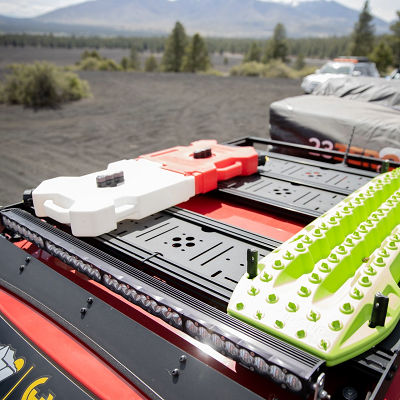
Roof Racks
Bed Racks
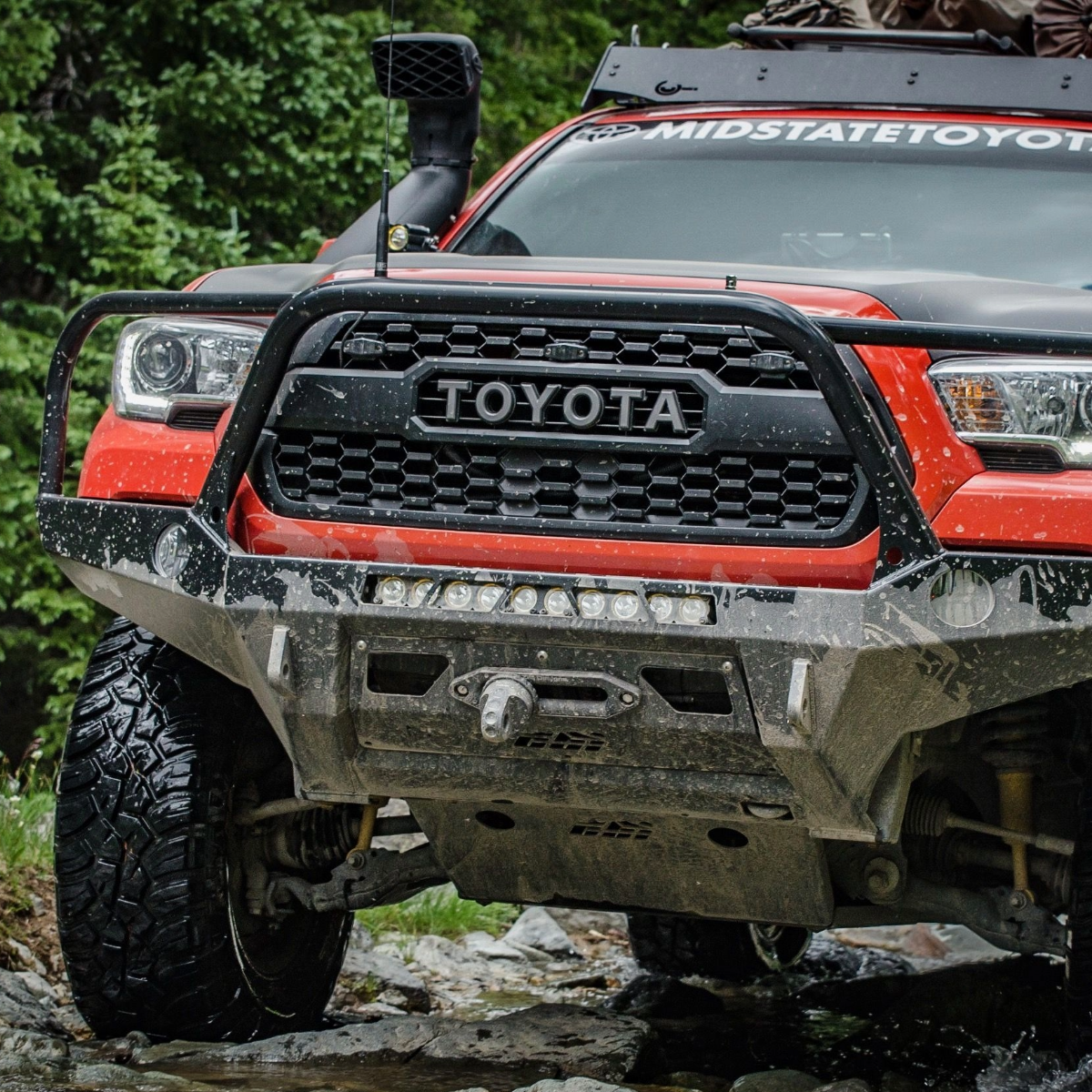
Front Bumpers
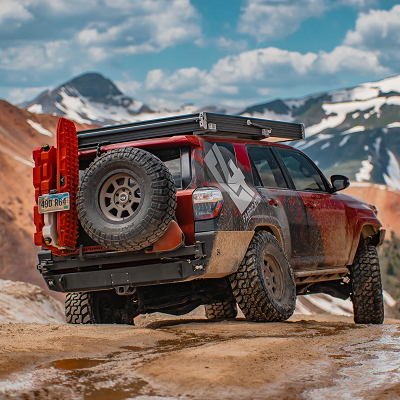
Rear Bumpers
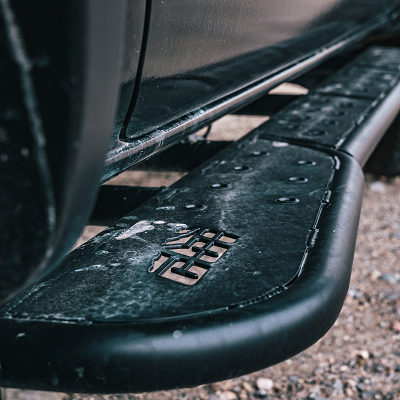
Rock Sliders
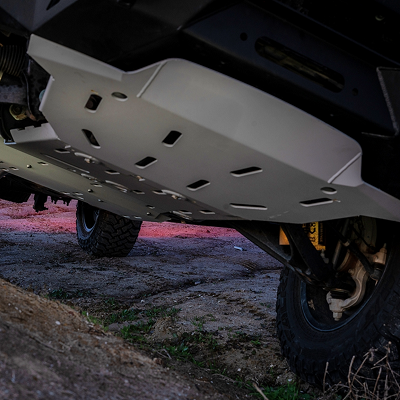
Skid Plates
April 30, 2025 9 min read

After having countless stories of customers putting tons of miles on their Tacoma, I can tell you firsthand that the stock exhaust was one of the first things some of them wished they upgraded. Let's be honest, many Tacoma owners are looking for better performance, improved gas mileage (even if it's not by a lot), and—I'll admit it—a more aggressive sound that matched the truck's appearance.
Whether you're hitting trails on weekends or using your Tacoma as a daily driver, an aftermarket exhaust system is an excellent Tacoma accessory and one of the most effective bolt-on modifications you can make. The right exhaust transforms the entire driving experience with enhanced power delivery and a sound that turns heads for all the right reasons, and if you're lucky, you'll also get some fuel savings here and there.
Your Tacoma's factory exhaust was designed with multiple priorities in mind—emissions compliance, noise reduction, and cost-effectiveness for mass production. Toyota engineers had to make compromises, particularly in pipe diameter and routing, to meet these requirements.
The stock system typically features narrower 2-2.25" diameter piping that restricts exhaust flow, multiple bends and crimps that create bottlenecks, heavy restrictive mufflers designed primarily for noise suppression, and compromised routing to accommodate various underbody components.
By contrast, performance exhaust systems prioritize performance through larger diameter piping (usually 2.5-3") for improved exhaust gas flow, mandrel-bent tubing that maintains consistent diameter around corners, high-flow mufflers that reduce restriction while producing better sound, optimized routing that maximizes ground clearance, and higher-quality materials like stainless steel or titanium that resist corrosion better than factory components. These differences aren't just theoretical—they translate directly into noticeable improvements you'll feel every time you stomp on that gas pedal.
When you first install an aftermarket exhaust on your Tacoma, the power difference will be immediately noticeable, especially in the mid-range RPMs where you need it most for highway passing and hill climbing.
A quality aftermarket exhaust can add approximately 5-15 horsepower and 5-10 lb-ft of torque to your Tacoma. This might not sound dramatic compared to forced induction upgrades, but the power comes exactly where you use it most in everyday driving. You'll feel stronger acceleration from 2000-4000 RPM, which is the range where most of us spend our time.
The power increase comes from reducing exhaust backpressure, which from its name, sucks the exhaust back to the engine instead of flowing out the back. When you have better exhaust flow, your engine's intake flow will also function better.
This could mean more power, improved fuel efficiency, or a little bit of both.
Tacomas have heavy exhaust systems, they're designed to muffle as much sound as possible and are usually made from heavier metals. In most cases, performance exhaust systems are lighter and combine that with a more efficient exhaust flow, and most people can get a 1-2 MPG improvement in highway driving.
While the fuel savings alone won't pay for the exhaust system quickly, combined with the performance benefits, it's a nice bonus that helps offset the cost over time. On longer road trips, those 1-2 extra miles per gallon still add up.
Even if all you want is to burn Dinosaur juice and hear those revs, you've got to admit, it's always nice seeing some savings.
One of the most satisfying changes you might experience is the improved throttle response. With less backpressure, your engine responds more quickly to throttle inputs and sucks more air in quicker. This translates to a more engaging driving experience where the truck feels more responsive and alive.
This benefit is particularly noticeable during initial acceleration from a stop, when passing at highway speeds, climbing hills under load, and when towing (though gains will be more modest under heavy loads).
Let's be honest—many of us choose aftermarket exhausts as much for the sound as for the performance. The Tacoma's stock V6 has an uninspiring exhaust note, even more so if you have one of those turbo four-cylinder engines that's getting more common these days. But, nevertheless, the right aftermarket system transforms this into something that better reflects the truck's capabilities.
Different exhaust designs produce different sound profiles. You can find systems that create a deep, throaty rumble with larger mufflers and moderate resonator designs, more aggressive sportier notes from systems with smaller mufflers and less sound dampening, or subtle enhancements from performance exhaust systems focused on power gains with minimal sound increase.
What I've learned from installing several different systems is that sound clips online rarely capture the true in-cabin experience. Systems that sound overly loud in YouTube videos are often quite reasonable inside the cab, especially at cruising speeds, where many feature technology to prevent drone (that annoying resonant frequency that can develop at specific RPMs). Most importantly, quality Tacoma exhaust systems are designed to eliminate the dreaded drone at highway cruising speeds—a problem that poorly designed systems often create.
Borla has built a reputation for premium performance exhaust systems with exceptional build quality and distinctive sound profiles. Their T-304 stainless steel construction and million-mile warranty speak to their confidence in their product.
For Tacoma owners, Borla typically offers three sound levels: Touring with moderate sound increase and minimal drone, S-Type with more aggressive sound and distinctive Borla tone, and ATAK with maximum sound output for those wanting the most aggressive note.
Here's a clip of the Borla Cat-Back Exhaust system for the third-gen Tacoma, this one has the S-Type sound level.
MagnaFlow excels at creating systems with a deep, rich tone that avoids being overly loud or obnoxious. Their straight-through muffler design promotes excellent flow characteristics while maintaining a civilized sound level.
Their polished stainless tips and precise fitment make their systems popular for Tacomas that see both daily driving and weekend adventures.
Fun fact, their Overland Series has an option to maintain a high-clearance exit angle so it'll still be capable off-road.
Here's a sound clip of their Overland Series Cat-Back Exhaust:
Gibson offers more budget-friendly options without significantly compromising quality. Their distinctive black ceramic coating on some models gives a stealth appearance that many Tacoma owners prefer. Gibson systems tend to have a slightly more aggressive sound than comparable systems, which appeals to owners wanting more bark from their truck.
Here's a before-and-after sound of one of their exhausts on a 2017 3rd gen Tacoma:
MBRP has become one of my personal favorites for Tacoma applications due to their excellent balance of quality, performance, and value. Their comprehensive Armor series offers options for every Tacoma owner at different price points and performance levels, so let's break them down.
The Armor Lite Series features aluminized steel construction, making it a good entry-level option, though with a shorter lifespan than stainless alternatives. It comes with a single side exit design for a clean appearance and offers moderate sound enhancement with good performance gains. It's the most affordable option. You can check out the MBRP Armor Lite Aluminized Steel Cat-Back System for more details.
The Armor BLK Series uses black aluminized steel with a durable coating that provides enhanced visual appeal with its stealth black finish. It offers similar performance characteristics to the Armor Lite with improved durability, also in a single side exit configuration. For more info, check out the MBRP Armor BLK Black Aluminized Steel Cat-Back System.
The premium Armor PRO Series features T304 stainless steel construction for maximum longevity and is available in both single side exit and turndown exit options.
This is the most expensive option from MBRP, but it's also the most durable option that will likely outlast your ownership of the truck.
Available options include the following:
MBRP Armor Pro Stainless Steel Cat-Back System, MBRP Armor Pro Stainless Steel Turndown Exit System
MBRP Armor Pro 3" Aluminized Steel Turndown Exit System.
For those concerned with ground clearance, I recommend getting the one with the turndown exit.
My experience with the Armor PRO stainless steel system revealed excellent build quality, a perfect fitment, and a sound profile that was aggressive during acceleration but settled down nicely at cruising speeds—exactly what most Tacoma owners are looking for.
Here's the sound of their Armor exhaust system on a 2024 Tacoma, yes, only one sound clip, as they sound more or less the same, just with different materials.
When upgrading your Tacoma's exhaust, you'll need to choose between different system types.
Cat-Back Systems replace everything from the catalytic converter (hence, cat-back), offering the best balance of performance gains and installation ease with most of them being easy bolt on installations.
They maintain emissions compliance in all 50 states, provide the most noticeable sound and performance improvements, and typically cost $500-1,000.
In my experience, cat-back systems offer the best value proposition for most Tacoma owners. They provide substantial performance and sound benefits without requiring modification to emissions equipment.
Axle-Back Systems replace only the muffler section from the rear axle back. They're easier and less expensive to install ($300-600) and focus primarily on sound enhancement with minimal performance gains. They're a good option for those primarily interested in sound with a limited budget.
Header upgrades replace exhaust manifolds with higher-flowing components and offer the greatest potential performance gains (10-20 horsepower). They're the most expensive option ($500-1,200 plus installation) and may require additional components and an ECU remap for proper operation. Headers can affect emissions compliance in some states.
For most owners, I recommend starting with a quality cat-back system. If you later decide you want more performance, headers can be added to work with your cat-back system for maximum gains.
After years of trying out exhaust systems on Tacomas, I've learned that most cat-back systems can be installed with basic hand tools in 2-3 hours, maybe even more if it's your first project.
Professional installation can easily cost you hundreds, but consider pro installation if you're not sure, since you do have to get under your truck.
Doing it yourself requires jack stands or a lift, a socket set, penetrating oil, and patience. No welding required for most cat-back systems, so if you have the things mentioned, it'll be a pretty easy install.
Most of these systems are bolt-on installations, but that's not the hard part. Common challenges include rusted or seized exhaust hangers, adding significant time to the job, though having a second person helps align the system during installation.
I always recommend applying an anti-seize compound to all fasteners to prevent future installation headaches.
For breaking in your new exhaust, drive normally for the first 100 miles to allow all components to seal properly. Expect the sound profile to settle slightly after 200-300 miles, and re-torque all fasteners after 500 miles. One pro tip: Spray all rubber hangers with silicone lubricant before removal and installation—this simple step can save 30 minutes of wrestling with stubborn rubber isolators.
For many, a Tacoma exhaust system is one of the most satisfying upgrades you can make. The combination of improved performance, better sound, and subtle fuel economy gains makes it a modification with tangible benefits you'll appreciate every time you drive.
Whatever system you choose, upgrading your Tacoma's exhaust transforms the driving experience in ways that make every mile more enjoyable, whether you're commuting to work or exploring off the beaten path.
If you have a specific exhaust system in mind or a budget you need to work with, feel free to contact us anytime here at Truck Brigade, our experts are ready to help you out!
Will changing my exhaust void my warranty?
No, an aftermarket exhaust alone cannot void your entire vehicle warranty. Under the Magnuson-Moss Warranty Act, manufacturers must prove that an aftermarket part caused a specific problem before denying warranty coverage for that particular component.
How much horsepower will I gain from an aftermarket exhaust?
Typically, you can expect 5-15 horsepower gains from a quality cat-back exhaust system alone. When combined with an air intake and proper tuning, this can increase to 15-25 horsepower.
Will my Tacoma pass emissions with an aftermarket exhaust?
As long as you choose a cat-back system that retains the factory catalytic converters, your Tacoma should pass emissions testing in all 50 states. Header installations may require additional components to remain emissions compliant.
Is there a break-in period for new exhaust systems?
Yes, I recommend driving normally for the first 100-200 miles to allow all gaskets and connections to properly seal. You may notice the exhaust sound "settling" during this period as components reach their operating temperature cycles.
Comments will be approved before showing up.
Sign up to get the latest on sales, new releases and more …